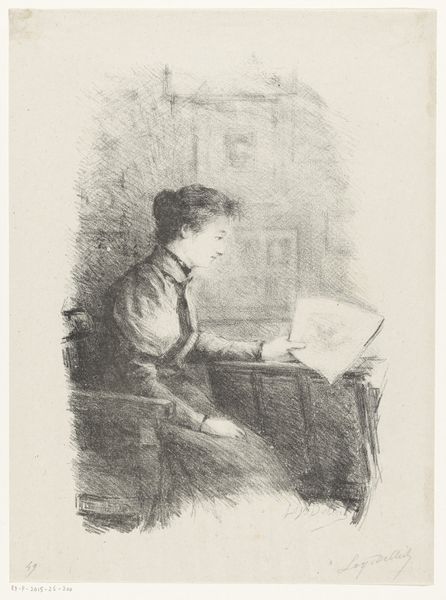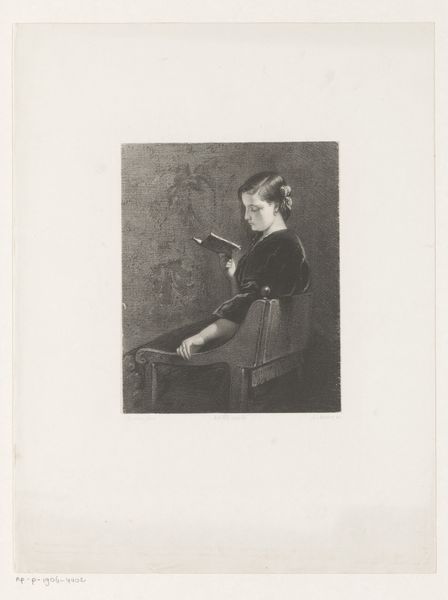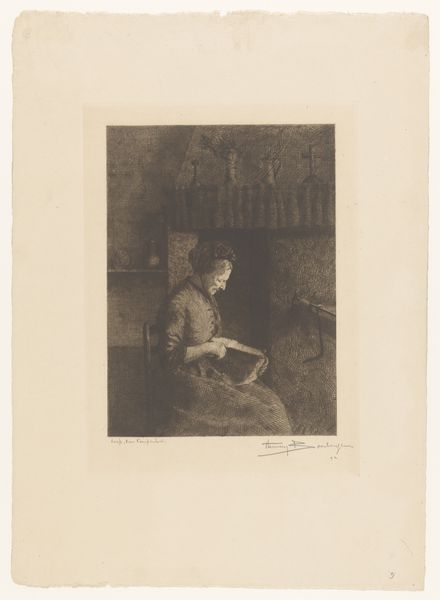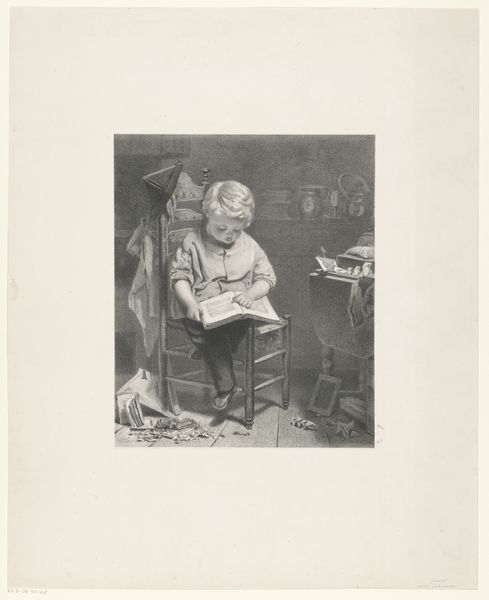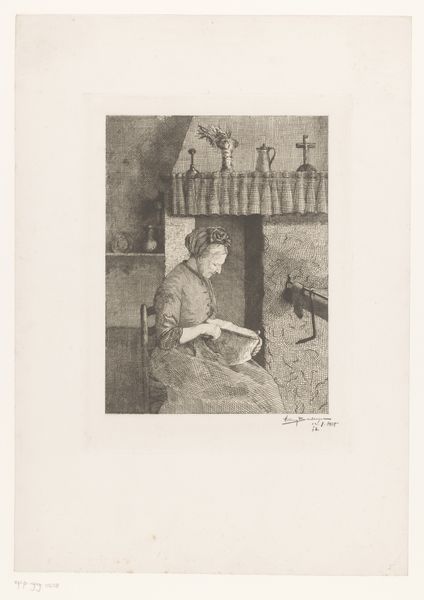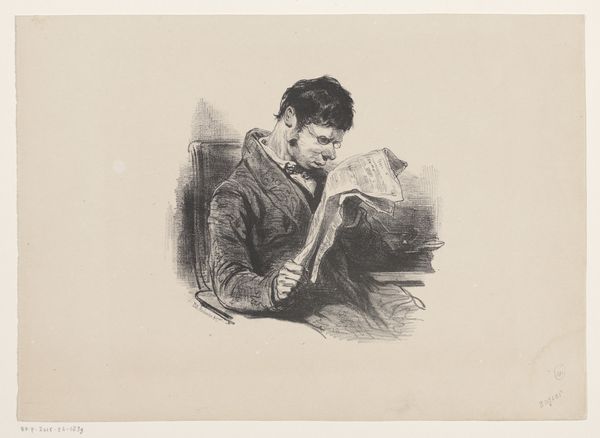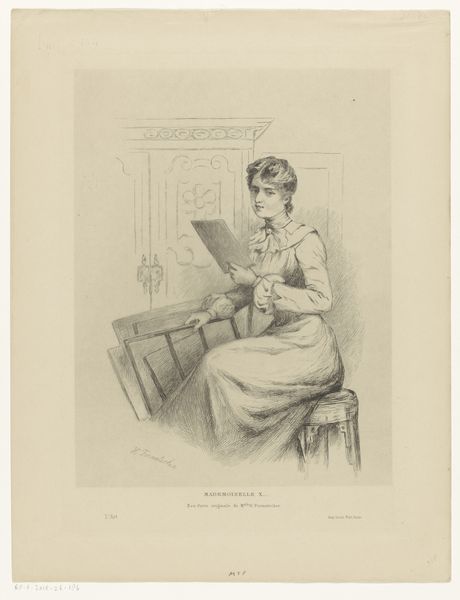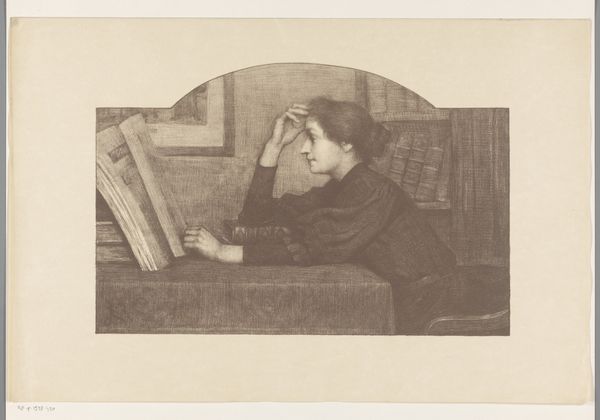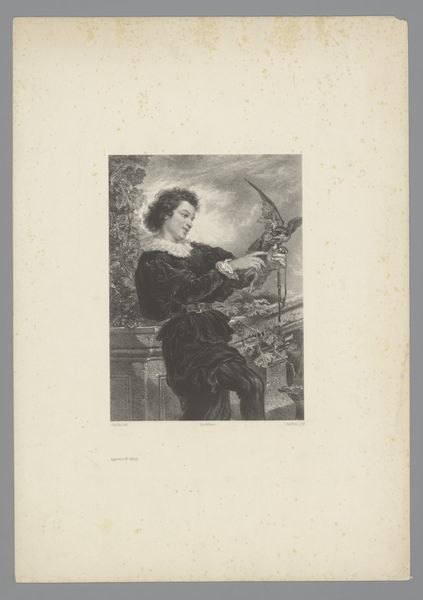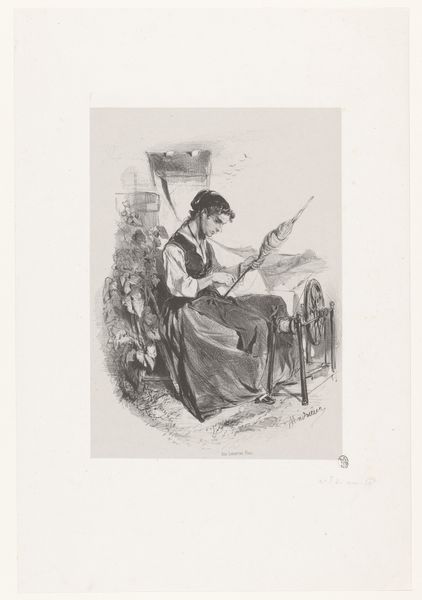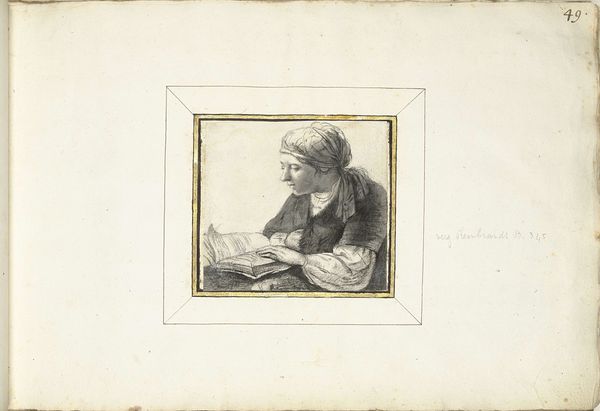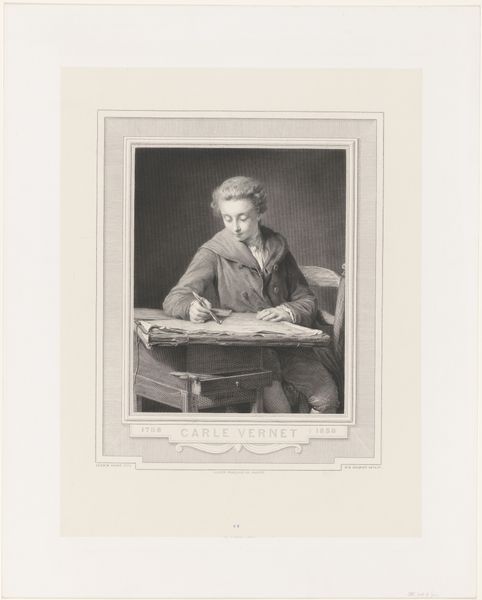
drawing, lithograph, print, paper, pencil
#
portrait
#
pencil drawn
#
drawing
#
lithograph
# print
#
pencil sketch
#
charcoal drawing
#
paper
#
pencil drawing
#
romanticism
#
pencil
Dimensions: 205 × 180 mm (primary support); 358 × 275 mm (secondary support)
Copyright: Public Domain
Curator: Let’s discuss this portrait of Auguste Raffet created by Auguste Bry in 1839, held here at the Art Institute of Chicago. Bry rendered it using lithography, a technique known for its rich textures and delicate tonal variations. What are your initial thoughts? Editor: The piece feels quiet and contemplative. I'm struck by the contrast between the precise lines delineating Raffet’s face and the almost ethereal quality of the background. It seems to capture a moment of intense artistic concentration, and maybe even a hint of melancholy. Curator: Absolutely. Notice how the artist uses hatching and cross-hatching to build form and shadow. It creates depth and volume within a largely monochromatic palette. And the delicate lines capture the sitter’s likeness with remarkable clarity. Semiotically, the pen in his hand functions as both tool and signifier, alluding to his artistic identity. Editor: Yes, and situating this portrait within its historical context is equally enriching. The Romantic era grappled with the burgeoning industrial revolution, leading many artists and intellectuals to idealize individual expression and celebrate personal genius. Raffet, depicted absorbed in his craft, becomes an embodiment of that romantic ideal, particularly regarding men’s work during this time. Curator: Bry was particularly attentive to the minute details. Look closely at the way he’s rendered the collar of Raffet’s jacket. There’s an emphasis on the tangible, on texture, while the rest of the piece emphasizes movement and the conceptual process. Editor: And I think the fact that it is a portrait made by one artist of another invites us to consider the dynamics within artistic communities during this period. There may be admiration here, perhaps even professional aspiration, interwoven with questions of social mobility and the role of artistic labour during this transitional time in Europe. Curator: I find the romantic treatment of light particularly compelling. The way it glances across Raffet’s brow, illuminating his features and emphasizing the intensity of his gaze, reinforces the emphasis on his individualism and subjectivity that you’re raising. Editor: Thinking about its legacy, it makes me wonder what this image signified to contemporary audiences versus its value now. Who saw this, who could afford it? Did this image become part of a visual narrative, and does it resonate with broader narratives of marginalized voices? Curator: Considering all its complexities, it's fascinating to delve into how Bry captures both the technical prowess and internal world of a fellow artist. Editor: Definitely. Thinking about this Romantic portrait today opens doors for more questions than answers about men's portraiture. It leaves me contemplating the shifts and continuity that affect images as they age and as they're being constantly reproduced.
Comments
No comments
Be the first to comment and join the conversation on the ultimate creative platform.
